Prairie Style Architecture is an architectural style that originated in the United States in the late 19th and early 20th centuries. This style is characterized by its use of horizontal lines, low-pitched roofs with overhanging eaves, and integration with the surrounding landscape. It emphasizes simplicity, functionality, and natural materials, and it is often associated with the work of Frank Lloyd Wright.

If you want to know about the staircase design or landscape garden or requirements for disabled persons in a building, please click the link.
History and origin of Prairie Style Architecture
The Prairie Style Architecture originated in the Midwest region of the United States in the late 1800s, primarily in the states of Illinois, Wisconsin, and Minnesota. The style was a response to the traditional Victorian architecture, which was ornate and heavily decorated.
Prairie Style was influenced by the Arts and Crafts movement, which emphasized craftsmanship, simplicity, and natural materials. The architect who is most closely associated with the Prairie Style is Frank Lloyd Wright, who began developing the style in the early 1900s.
Importance of Prairie Style Architecture
Prairie Style Architecture is significant because it represented a departure from the traditional architectural styles of the time. It introduced a new approach to building design, which was focused on the integration of the building with its surroundings, functionality, and simplicity.
Prairie Style buildings were often designed to blend in with the natural landscape, which was a departure from the ornate, decorative styles of the past. The style was also important because it helped to establish Frank Lloyd Wright as one of the most influential architects of the 20th century.
Today, Prairie Style Architecture remains an important part of the American architectural tradition and is still used in new building designs.
1) Characteristics of Prairie Style Architecture
i) Low-pitched roofs with wide overhanging eaves:
One of the most distinctive features of Prairie Style Architecture is the low-pitched roof with wide overhanging eaves. This design element was inspired by the flat landscape of the Midwest and serves to emphasize the horizontal lines of the building. The wide overhangs also provide shade and protection from the elements.
ii) Emphasis on horizontal lines and shapes:
Prairie Style Architecture is characterized by its emphasis on horizontal lines and shapes. This design element is intended to blend the building with the landscape and create a sense of harmony with the natural environment. The use of horizontal lines also serves to make the building appear wider and lower to the ground.
iii) Use of natural materials:
Another important characteristic of Prairie Style Architecture is the use of natural materials, such as stone, brick, and wood. These materials were often left in their natural state, with minimal finishing or decoration. The use of natural materials was meant to create a sense of harmony between the building and its surroundings.
iv) Integration of the building with the landscape:
Prairie Style Architecture is designed to blend in with the natural landscape. This is achieved through the use of low-pitched roofs, wide overhanging eaves, and the use of natural materials. The building is often situated in such a way that it appears to be an extension of the surrounding landscape.
v) Open floor plans with minimal ornamentation:
Prairie Style Architecture is characterized by its open floor plans and minimal ornamentation. The focus is on functionality and simplicity, with a minimum of unnecessary decoration. The open floor plan is meant to create a sense of spaciousness and flow between rooms. The minimal ornamentation is meant to emphasize the natural beauty of the materials used in the building’s construction.
2) Influential Prairie Style Architects
i) Frank Lloyd Wright:
Frank Lloyd Wright is one of the most well-known and influential architects of the 20th century. He is often associated with the Prairie Style Architecture, as he was one of its primary developers. Wright’s designs emphasized the use of natural materials, open floor plans, and integration with the surrounding landscape.
Some of his most famous Prairie Style buildings include the Robie House in Chicago and the Unity Temple in Oak Park, Illinois.

ii) Walter Burley Griffin:
Walter Burley Griffin was an American architect who worked closely with Frank Lloyd Wright. Griffin was instrumental in the development of the Prairie Style, and he helped to design many of Wright’s buildings. After parting ways with Wright, Griffin moved to Australia, where he became an influential architect in his own right. He is best known for designing the city of Canberra, which is the capital of Australia.
iii) Marion Mahony Griffin:
Marion Mahony Griffin was an American architect and artist who worked closely with Frank Lloyd Wright and Walter Burley Griffin. She was one of the first licensed female architects in the United States and was instrumental in the development of the Prairie Style.
Mahony Griffin is best known for her architectural drawings and renderings, which were often used in the design and promotion of Wright and Griffin’s buildings. She also played a significant role in the design of the city of Canberra, working alongside her husband, Walter Burley Griffin.
3) Prairie Style Architecture in Residential Buildings
Exterior features: Prairie Style residential buildings are characterized by their low-pitched roofs with wide overhanging eaves, emphasis on horizontal lines, and integration with the landscape. They often feature large, open porches or terraces that extend the living space outdoors. The exteriors are typically constructed of natural materials, such as stone, brick, and wood, and they are often left in their natural state, with minimal finishing or decoration.
Interior features: The interiors of Prairie Style residential buildings are characterized by their open floor plans, minimal ornamentation, and integration with the outdoors. The living spaces are often interconnected, with few walls or partitions between rooms. The emphasis is on functionality and simplicity, with a minimum of unnecessary decoration. The interiors often feature built-in furniture and cabinetry, which is designed to be both functional and aesthetically pleasing.
Examples of notable Prairie Style residential buildings
The Robie House, Chicago, Illinois – designed by Frank Lloyd Wright, this building is one of the most iconic examples of Prairie Style Architecture. It features a low-pitched roof with wide overhanging eaves, emphasis on horizontal lines, and integration with the landscape.
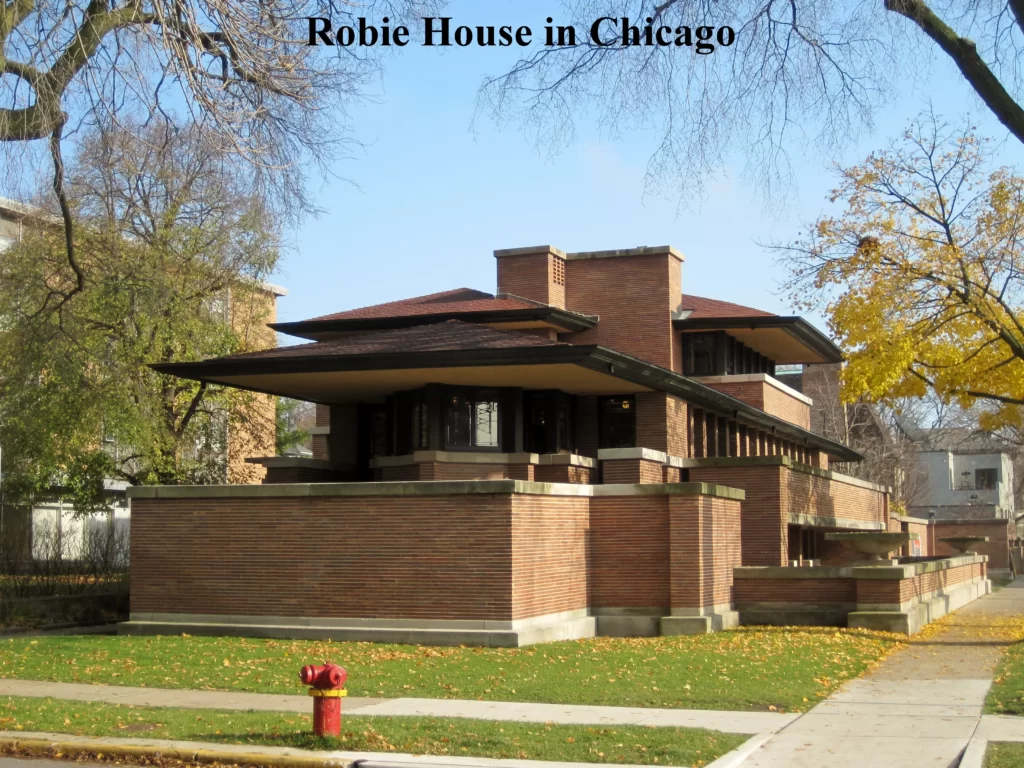
The Ward Willits House, Highland Park, Illinois – another notable example of Prairie Style Architecture designed by Frank Lloyd Wright. This building features a unique floor plan, with a central living space that is surrounded by bedrooms and service areas.
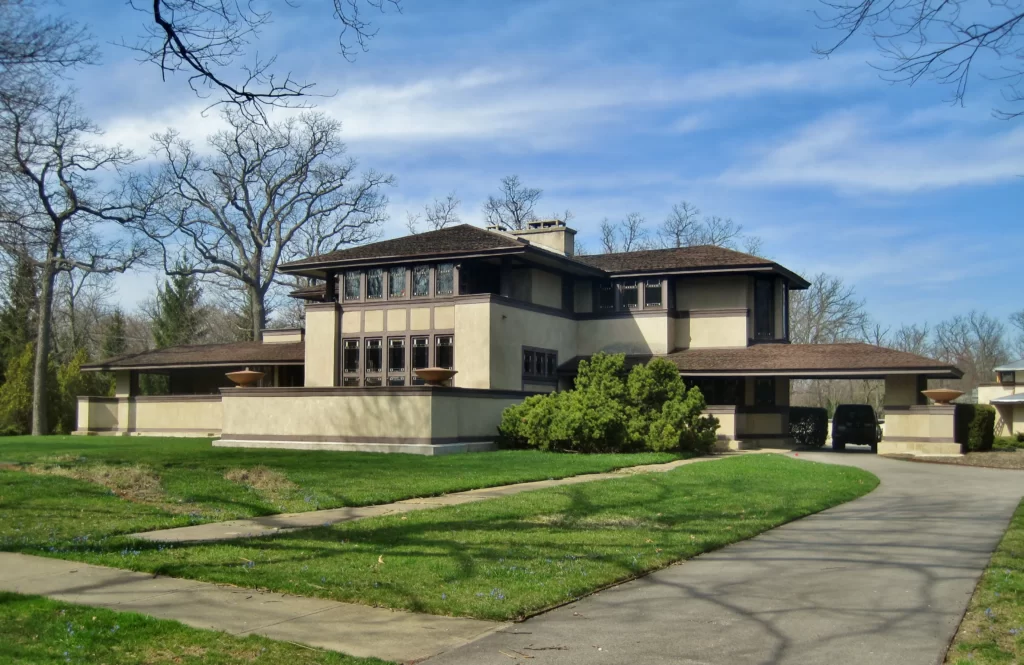
The Coonley House, Riverside, Illinois – designed by Frank Lloyd Wright, this building is known for its colorful and playful stained glass windows. It also features a large, open porch that extends the living space outdoors.
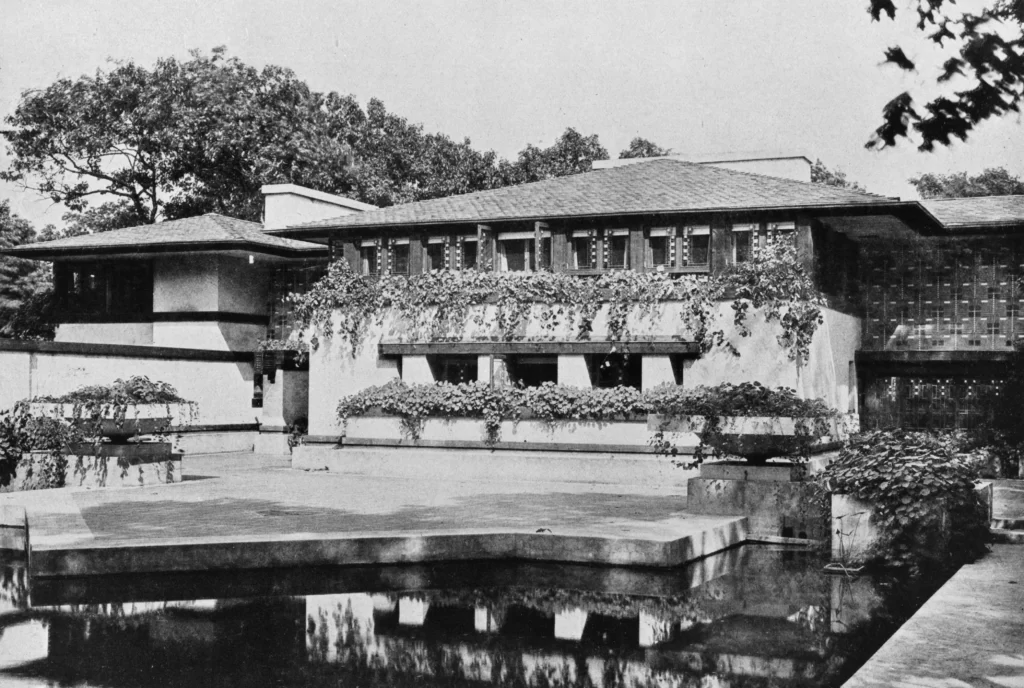
The Darwin Martin House, Buffalo, New York – designed by Frank Lloyd Wright, this building is a complex of several interconnected structures that are designed to blend in with the surrounding landscape. It features a low-pitched roof with wide overhanging eaves and extensive use of natural materials.
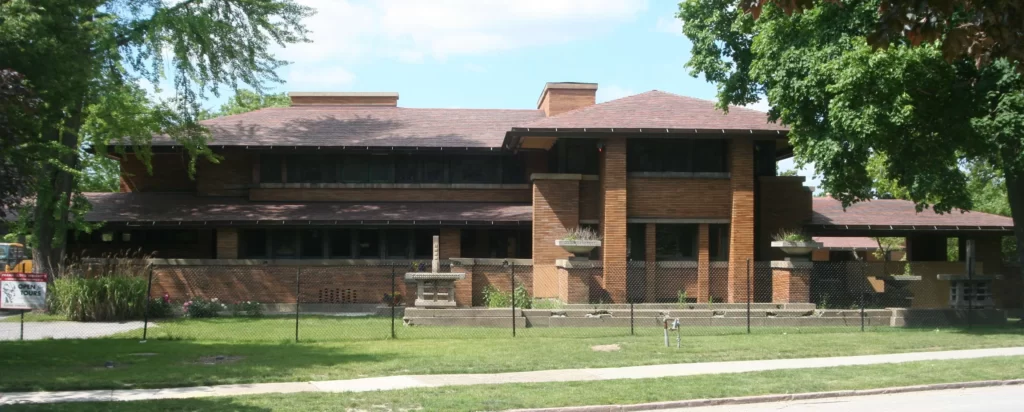
The William R. Heath House, Buffalo, New York – designed by Walter Burley Griffin, this building features a unique hexagonal floor plan and a low-pitched roof with wide overhanging eaves. It also features extensive use of natural materials, such as stucco and wood.
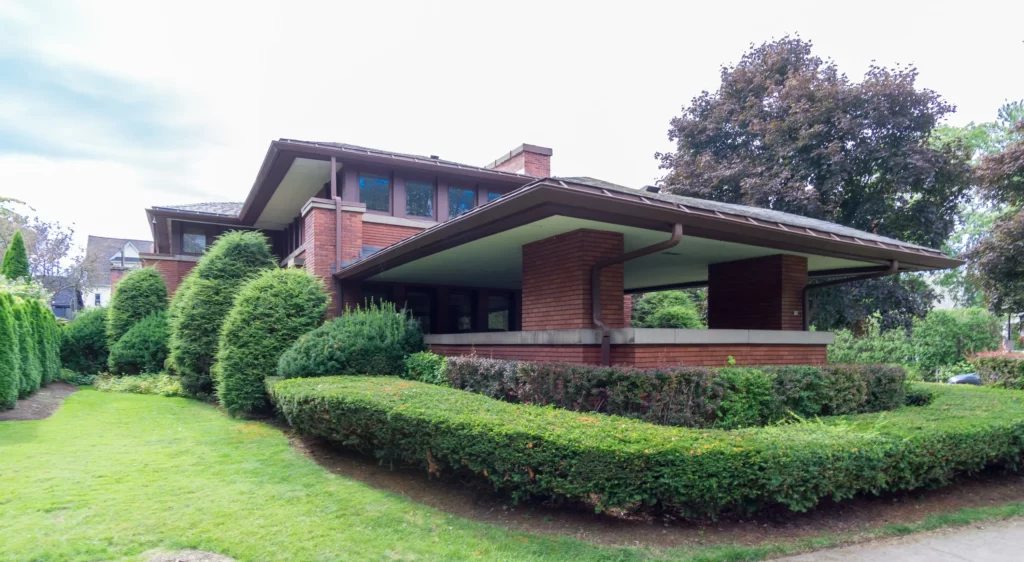
4) Prairie Style Architecture in Commercial Buildings
While Prairie Style Architecture is perhaps most closely associated with residential buildings, it has also been used in commercial buildings. The same principles of open floor plans, integration with the landscape, and emphasis on natural materials were applied to commercial structures, resulting in buildings that were both functional and aesthetically pleasing.
Examples of notable Prairie Style commercial buildings
Larkin Building, Buffalo, New York – designed by Frank Lloyd Wright, this building was the headquarters of the Larkin Soap Company. It featured a unique and innovative design, with a central atrium that allowed natural light to flood the interior spaces. Unfortunately, the building was demolished in 1950, but its influence can still be seen in later commercial buildings.

Midway Gardens, Chicago, Illinois – also designed by Frank Lloyd Wright, this building was a combination restaurant and entertainment venue. It featured a large central courtyard with a stage for live performances, as well as smaller dining areas around the perimeter. The building was demolished in 1929, but it remains a significant example of Wright’s commercial work.

Dana-Thomas House, Springfield, Illinois – designed by Frank Lloyd Wright, this building was originally a private residence but was later converted into a public space. It features extensive use of natural materials and a unique floor plan that blurs the distinction between interior and exterior spaces.
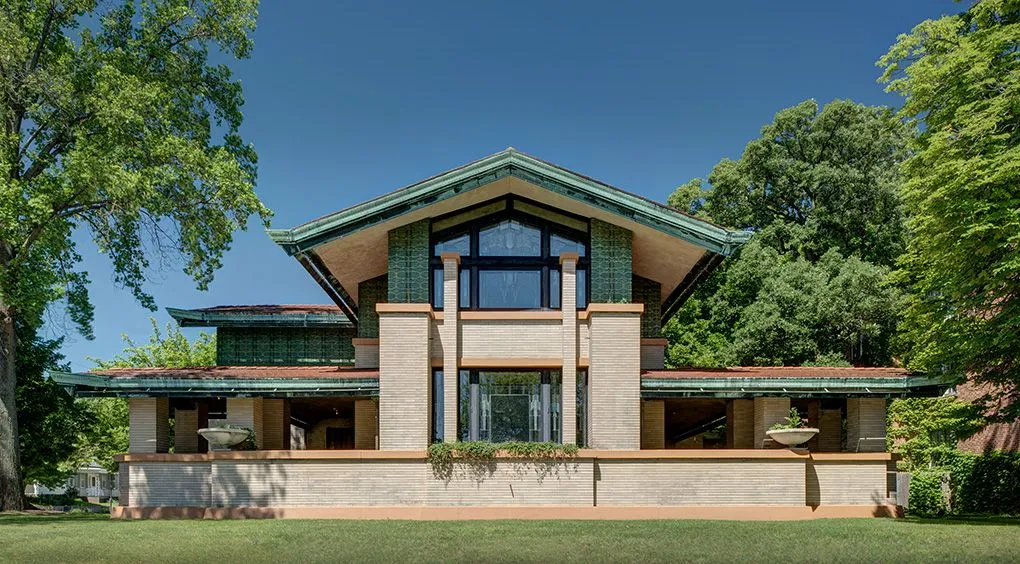
Unity Temple, Oak Park, Illinois – another building designed by Frank Lloyd Wright, this structure was originally a church but has since been repurposed as a community center. It features a unique design with a central dome and extensive use of natural materials.

Park Inn Hotel, Mason City, Iowa – designed by Frank Lloyd Wright, this building was a hotel that also included commercial spaces. It features a unique design with a central atrium and extensive use of natural materials. The building has undergone extensive restoration and is now a museum and hotel.

5) Prairie Style Architecture in Public Buildings
Prairie Style Architecture has also been used in public buildings, such as schools, government buildings, and museums. These buildings often feature the same emphasis on open floor plans, natural materials, and integration with the landscape as their residential and commercial counterparts.
The use of Prairie Style in public buildings was part of a larger movement towards creating buildings that were both functional and beautiful, and that could serve as a source of civic pride.
Examples of notable Prairie Style public buildings
Unity Temple Unitarian Universalist Congregation, Oak Park, Illinois – another building designed by Frank Lloyd Wright, this structure is a significant example of Prairie Style in a religious building. It features a unique design with a central dome and extensive use of natural materials.

Midland County Courthouse, Midland, Michigan – designed by Alden B. Dow, this building features a low-pitched roof with wide overhanging eaves and extensive use of natural materials, such as brick and stone.
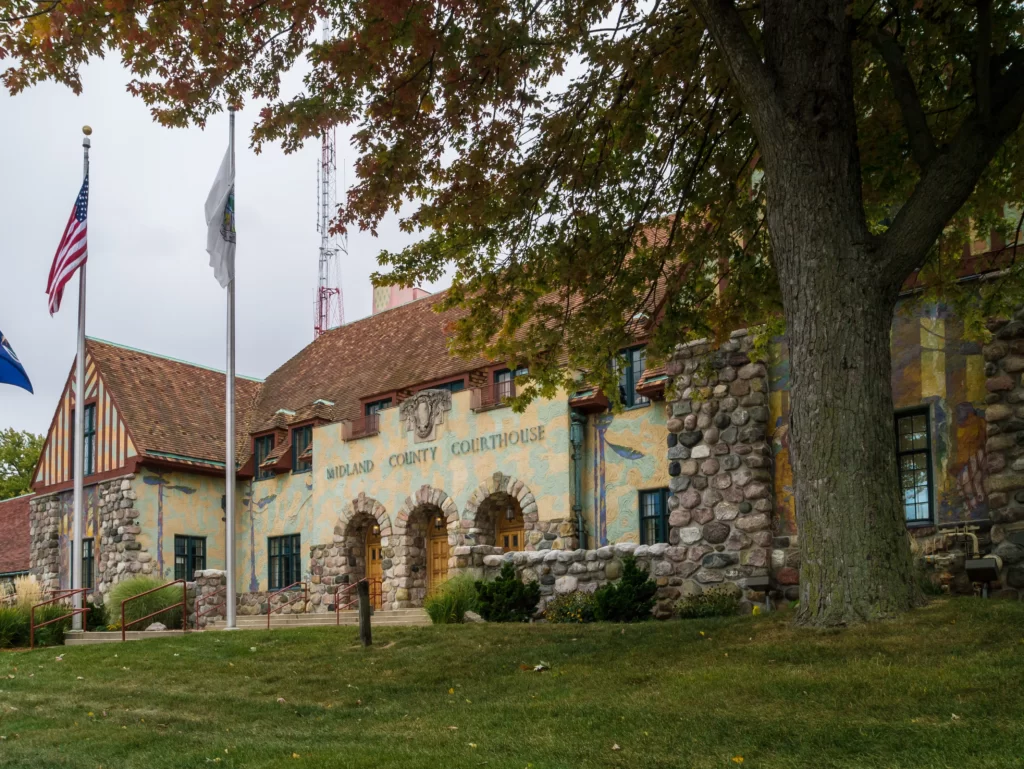
Hillside Home School, Spring Green, Wisconsin – also designed by Frank Lloyd Wright, this building was a school for the children of the Taliesin Fellowship, a community of artists and architects founded by Wright. It features a unique design with a central courtyard and extensive use of natural materials.
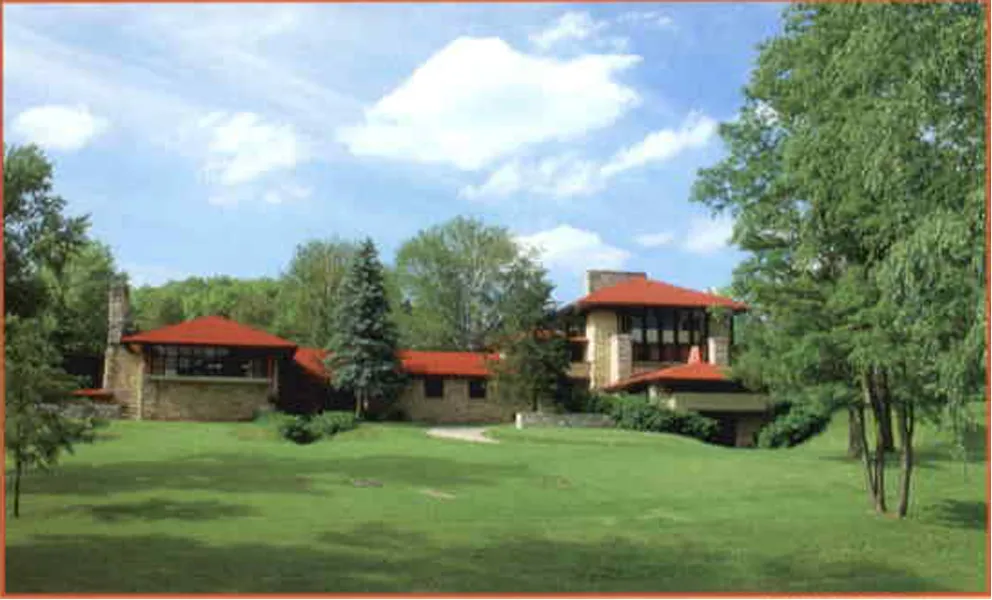
Chicago Cultural Center, Chicago, Illinois – originally the city’s central library, this building now serves as a cultural center and event space. It features a grand, open lobby with a central dome and extensive use of natural materials, such as marble and granite.
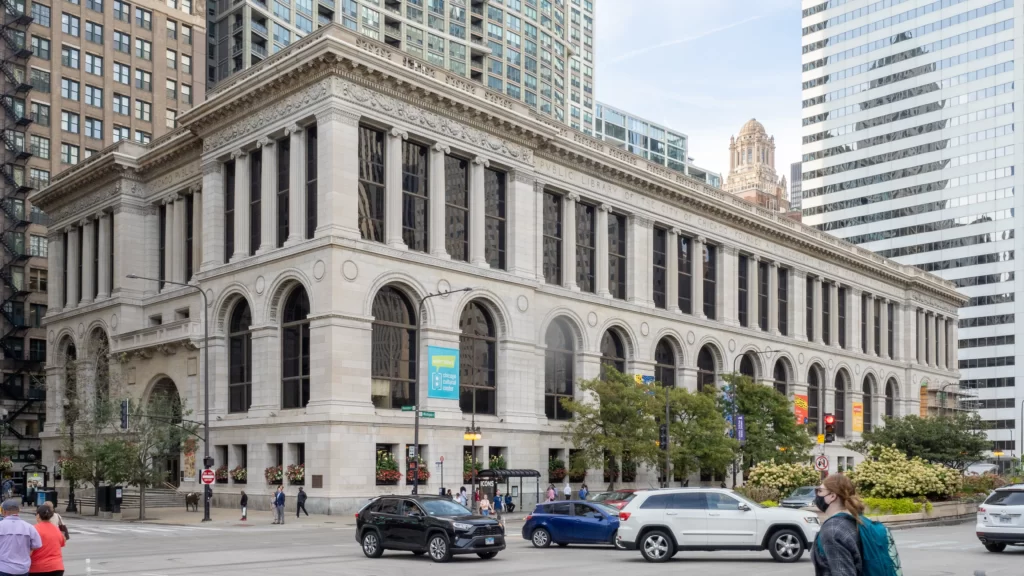
Herbert and Katherine Jacobs First House, Madison, Wisconsin – designed by Frank Lloyd Wright, this building was the first Prairie Style house built by Wright. It is now owned by the Frank Lloyd Wright Foundation and is open for tours. The house features extensive use of natural materials and a unique floor plan.
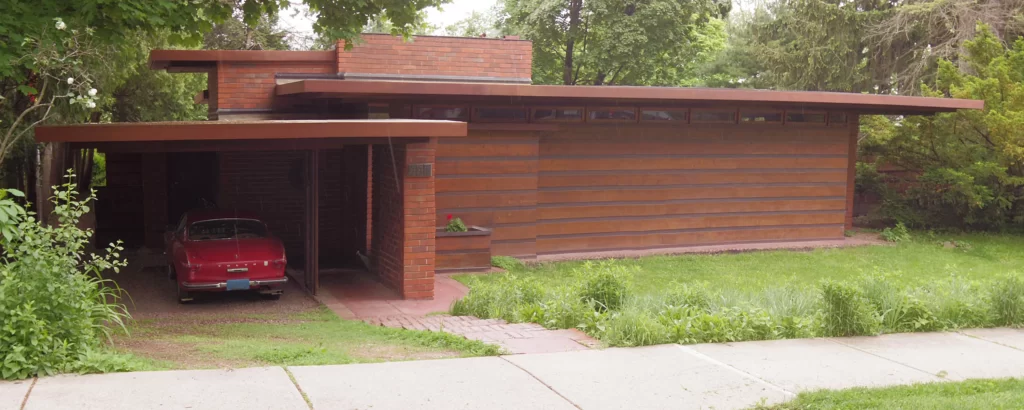
6) Impact of Prairie Style Architecture
i) Influence on modern architecture:
Prairie Style Architecture has had a significant influence on modern architecture, both in the United States and around the world. Its emphasis on open floor plans, integration with the landscape, and use of natural materials has inspired architects to create buildings that are more in harmony with their surroundings and that prioritize the needs of the people who use them. The style’s emphasis on simplicity and functionality has also been influential in the development of modernist architecture.
ii) Importance to American architecture:
Prairie Style Architecture is an important part of American architecture, both for its historical significance and its ongoing influence on the built environment. The style emerged at a time when American architects were looking for ways to create a distinctively American architectural language, and Prairie Style buildings are often seen as a reflection of the country’s unique landscape and culture.
iii) Significance to cultural heritage:
Prairie Style Architecture is an important part of American cultural heritage, and its buildings are treasured for their aesthetic and historical value. Many Prairie Style buildings have been designated as historic landmarks, and efforts have been made to preserve and restore these buildings for future generations. The style’s emphasis on integrating buildings with the natural environment has also contributed to a broader cultural appreciation of the natural world and the need to protect it.
7) Conclusion
Prairie Style Architecture is a distinctive architectural style that emerged in the late 19th and early 20th centuries in the United States. It is characterized by low-pitched roofs with wide overhanging eaves, emphasis on horizontal lines and shapes, use of natural materials, integration with the landscape, and open floor plans with minimal ornamentation. The style was pioneered by architects such as Frank Lloyd Wright, Walter Burley Griffin, and Marion Mahony Griffin, and has had a significant influence on modern architecture.
Significance of Prairie Style Architecture:
Prairie Style Architecture is significant for its historical and cultural significance, as well as its ongoing influence on the built environment. The style emerged at a time when American architects were seeking to create a distinctively American architectural language, and Prairie Style buildings are often seen as a reflection of the country’s unique landscape and culture. The style’s emphasis on integrating buildings with the natural environment has also contributed to a broader cultural appreciation of the natural world and the need to protect it.
Future of Prairie Style Architecture
Although Prairie Style Architecture emerged over a century ago, its influence continues to be felt in contemporary architecture. Many architects continue to be inspired by the style’s emphasis on simplicity, functionality, and integration with the natural environment. While Prairie Style Architecture may not be as prevalent today as it was in the early 20th century, its legacy continues to be celebrated and its buildings continue to be treasured for their aesthetic and historical value.